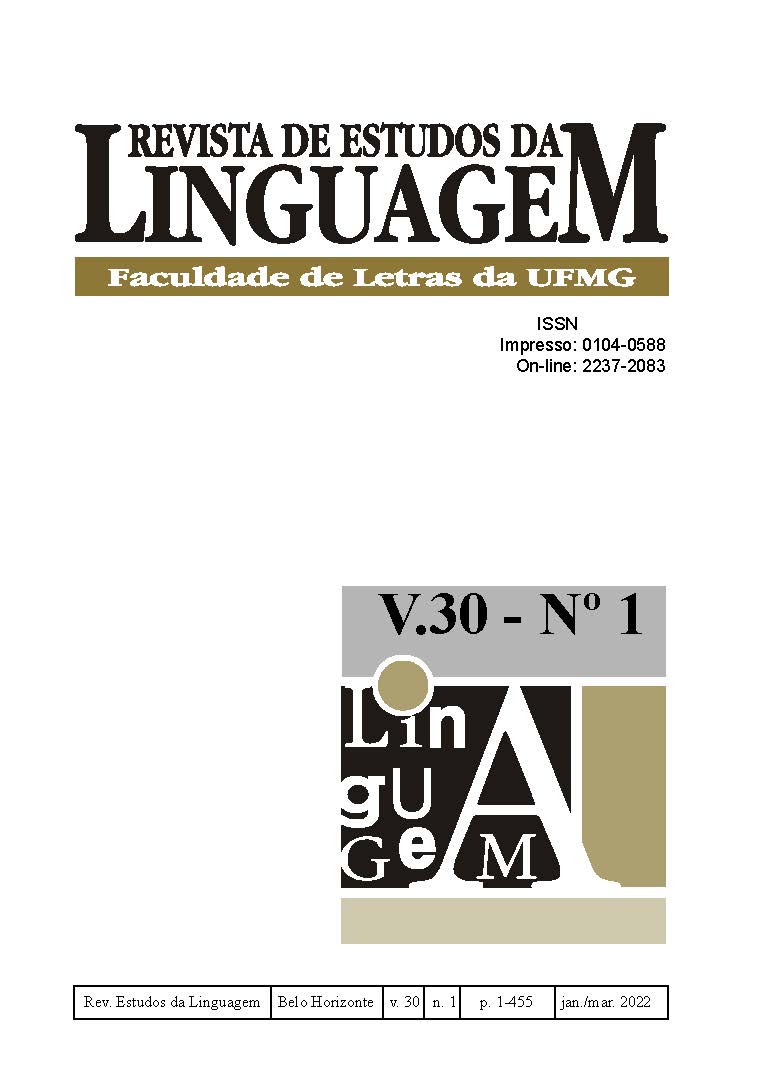Diferencias en la complejidad sintáctica y diversidad léxica de enunciados con distinta función pragmática en el habla dirigida a bebés argentinos
DOI:
https://doi.org/10.17851/2237-2083.30.1.293-318Palavras-chave:
función pragmática, diversidad léxica, complejidad sintáctica, entorno lingüístico, habla dirigida al niñoResumo
Numerosos trabajos han estudiado las características lingüísticas e interactivas en el habla dirigida al niño (HDN) en tanto pueden incidir en el desarrollo del lenguaje infantil (HOFF-GINSBERG, 1986). Sin embargo, han sido muy pocos los estudios que han atendido a la relación entre estas propiedades del HDN, distintos teóricos han comenzado a enfatizar en la importancia de abordar el estudio del input lingüístico de modo multidimensional (ROWE; SNOW, 2020). Con el objetivo de atender a este vacío en la literatura, este trabajo analiza la relación entre las propiedades interactivas y las propiedades lingüísticas del habla dirigida al niño. Para esto, se estudia la diversidad léxica y la complejidad sintáctica de enunciados con distintas funciones pragmáticas en el habla dirigida a 40 niños y niñas viviendo en el Área Metropolitana de Buenos Aires. Los resultados mostraron que los comentarios presentaban una mayor complejidad sintáctica y mayor diversidad léxica que los pedidos de acción y los pedidos de respuesta verbal. A su vez, los pedidos de acción se caracterizaban por un vocabulario más diverso que los pedidos de respuesta verbal. Las medidas de efecto del análisis de varianza, dan cuenta de que la función pragmática de los enunciados explica un porcentaje mayor de la varianza para la diversidad léxica que para la complejidad de los enunciados.





